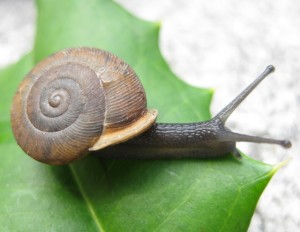Photos and stories from Lebanon
A friend of mine, a 19-year old man named Johnny Simon, recently returned from a month-long trip to visit his extended family in northern Lebanon. He gave me permission to publish the following photos, all of them taken along the Qadisha Valley.  Based on Johnny's stories and photos, this area is a magic and peaceful place populated by a highly religous group of people.
As I viewed his entire slide show, I couldn't help but notice the lack of commercialization. Johnny described how many of the people obtain significant amounts of their daily food by going out and picking the fruit fresh from trees.
Based on Johnny's stories and photos, this area is a magic and peaceful place populated by a highly religous group of people.
As I viewed his entire slide show, I couldn't help but notice the lack of commercialization. Johnny described how many of the people obtain significant amounts of their daily food by going out and picking the fruit fresh from trees.  [The five photos included in this post were taken by Johnny, and he has provided the brief comments for each photo]
Top, Inset: A view of Bsharre, birthplace of Khalil Gibran.
[top right: The Qadisha Valley, or valley of the saints, served as refuge for Lebanese Christians for hundreds of years. Even today, one cannot look upon the valley and still not be in awe. Here it is seen from a surrounding village. ]
Johnny indicated that there are approximately 30,000 churches along the Qadisha Valley, many of them small and carved into the cliffs.
Above: The mighty cedars of lebanon have stood for thousands of years. This cedar rests in the forest of God near the Qadisha valley.
A bit of background: After a long period of peace, Lebanon suffered a terrible civil war from 1975-1990. My friend is a Maronite Catholic--40% of the country is Christian, while 60% is Muslim. Many of the Christians left Lebanon as a result. Then, after another long period of relative peace, Lebanon was the site of the one month long 2006 Lebanon War between the Israeli military and Hezbollah. Johnny was told by his relatives that during this attack, the Israelis intentionally destroyed large sections of the cedar forests, knowing that the cedar tree is a national symbol of Lebanon.
[The five photos included in this post were taken by Johnny, and he has provided the brief comments for each photo]
Top, Inset: A view of Bsharre, birthplace of Khalil Gibran.
[top right: The Qadisha Valley, or valley of the saints, served as refuge for Lebanese Christians for hundreds of years. Even today, one cannot look upon the valley and still not be in awe. Here it is seen from a surrounding village. ]
Johnny indicated that there are approximately 30,000 churches along the Qadisha Valley, many of them small and carved into the cliffs.
Above: The mighty cedars of lebanon have stood for thousands of years. This cedar rests in the forest of God near the Qadisha valley.
A bit of background: After a long period of peace, Lebanon suffered a terrible civil war from 1975-1990. My friend is a Maronite Catholic--40% of the country is Christian, while 60% is Muslim. Many of the Christians left Lebanon as a result. Then, after another long period of relative peace, Lebanon was the site of the one month long 2006 Lebanon War between the Israeli military and Hezbollah. Johnny was told by his relatives that during this attack, the Israelis intentionally destroyed large sections of the cedar forests, knowing that the cedar tree is a national symbol of Lebanon.








